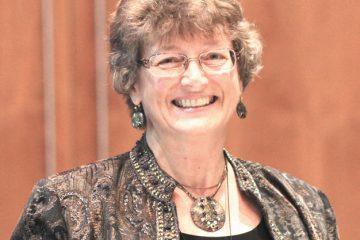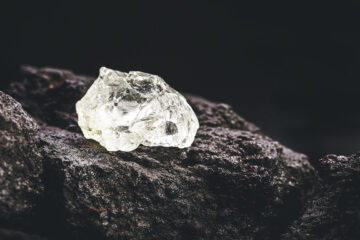Smashing idols
Children of the Bible Series
Jewish Family Identity Forum

By Candace R. Kwiatek, The Dayton Jewish Observer
Pick up a children’s Bible storybook and you’re likely to see the characters depicted as youngsters — Isaac toddling up the mountain to the altar, Joseph taunting his brothers with a coat of many colors, David aiming his slingshot at Goliath.
Yet in the biblical text, nearly all of the characters enter the scene fully grown, leaving empty pages in their childhood photo albums. Recognizing the need for a youthful snapshot or two, the rabbis often created stories — midrashim — to fill in the missing images.
In what would surely have been a YouTube hit in its day, one of the most famous midrashim (Genesis Rabbah 38)starts out with Abraham as a young boy, left alone one day to mind his father Terah’s idol shop.
Instead of selling the clay images, Abraham smashes all the idols except the largest one, putting a hammer in its hand. Upon his return, Terah refuses to believe his son’s explanation of a riot over a grain offering – because, he asserts, idols can’t do anything!
The rabbinic purpose for this and other related stories is captured by Rabbi Rachel Solomin, who writes in Stories of Our Ancestors that Abraham is “unafraid to challenge authorities regarding the most basic religious claims of his society. Abraham does not believe in God because God spoke to him or proved it. Instead, the midrash shows that Abraham “discovered God for himself.” Because Abraham recognized God, the commentators go on to explain, God chose Abraham. But what else might we discover in this engaging tale?
Imagine looking at Abraham’s childhood photo album. On one page is a view of father Terah’s idol shop. On the next is a photo of son Abraham smashing the idols. Would you see Abraham as a religious pioneer or something altogether different? Perhaps the sneering, rejecting, wicked son of the Passover Seder? Or the “I’m going to become a farmer, live on a kibbutz, speak Hebrew, and build a new nation” Zionist teen of the 19th century? Maybe a long-haired, Birkenstock-and-tie-dye-clad love-child of the ‘60s? Or even a googling-texting-sushi-eating-hybrid-car-driving daughter of the 21st century?
When I look at Abraham’s photo, I see the contrary youngster who says, “Let me do it by myself,” refuses to take piano lessons, and hates car trips. I see the teenager rejecting his father’s encouragement to join the tennis team or get an after-school job bagging groceries at a nearby market, rejecting her mother’s push to take more AP courses or sign up for summer camp. I see the new college grad rebelling against her father’s expectation to take over the family business or go on to medical school, rebelling against his mother’s dream for him to settle down in a nearby neighborhood or make aliyah. I see the daughter who chooses career over family and the son who’s a stay-at-home dad. I see…becoming.
Children are not androids, automatically performing as programmed. Nor should they be viewed as clones or molded into perfected versions of their parents.
“Jewish wisdom holds that our children don’t belong to us,” Wendy Mogel writes in The Blessing of a Skinned Knee. “They are both a loan and a gift from God, and the gift has strings attached. Our job is to raise our children to leave us. The children’s job is to find their own path in life.”
Even as a youngster, the rabbis suggest, Abraham chooses a new path, a new view of the universe and God over the familiarity of his father’s idol-worship.
This choice, this new identity, is echoed in the opening words of Abraham’s story in the biblical text, “Go-you-forth from your land, from your kindred, from your father’s house…” (translated by Everett Fox).
In his book Covenant & Conversation, Rabbi Jonathan Sacks explains that the three-fold call to Abraham is really a challenge not to be a victim — of social forces, of genetic determinism, of the negative influences of childhood — but rather to be liberated. It is a call to “stand back from the pressures and influences upon (him) and act in response to educated conscience, judgment, wisdom, (and) moral literacy.”
So does this mean that parents have no role beyond conception, that parenting is a matter of maintenance, that raising children should be approached with a laissez-faire, do-your-own-thing attitude?
After all, it sounds like children just “go forth” from their parents to create their own identities.
To the contrary: how would Abraham or any child gain the “educated conscience, judgment, wisdom, (and) moral literacy” to inform his journey?
“You shall teach (these words) to your children,” Deuteronomy 6:7 commands, and Proverbs 1:8 echoes, “Hear, my son, the instruction of your father, and forsake not the teaching of your mother.”
Multiple commentators throughout the centuries concur; the foundation of a liberated personal identity is the core of wisdom and morality built by parents.
So what did Abraham do between breaking the idols and leaving on his journey?
He spent nearly 75 years living in his father’s house, breaking some idols, to be sure, but building a core as well.
“Like the other distinctive achievements of the spirit — art, literature, music, poetry,” Sachs writes, “(personal identity) needs training, discipline, apprenticeship, the most demanding routines, and the most painstaking attention to detail. No one composed a great novel or symphony without years of preparation…”
Abraham’s journey wasn’t just about leaving Haran; it was also a journey to discover himself.
Abraham’s story is our story: discovering ourselves is a journey that takes us along well-trod paths and onto newly-paved highways, a journey that involves breaking some of our parents’ idols.
Family Discussion: Shakespeare wrote, “This above all, to thine own self be true…” What does it mean to be true to yourself? What is the core of your identity that was formed by your parents and what parts are your own inventions? What idols did you need to break?
Literature to share
Three Dolls by Irit Abramski: This slim paperback is a storybook and a guide for teaching about the Holocaust to upper elementary grades. It traces the tales of three Jewish girls who survived the Holocaust under different circumstances and their dolls, which played significant roles in their rescue. Photographs, personal testimonies, discussion questions and more are packed into this powerful resource. A must-have for teachers; highly recommended for families.
How to Ruin My Teenage Life by Simone Elkeles: A sequel (How to Ruin a Summer Vacation) that’s even better than the original. Main character Amy is a fixer whose good-hearted attempts go awry. Mix together a blended family, a “Romeo” dog, and an Israeli non-boyfriend and you can count on catastrophes. Believable, hilarious, and enjoyable for teens and adults alike.



